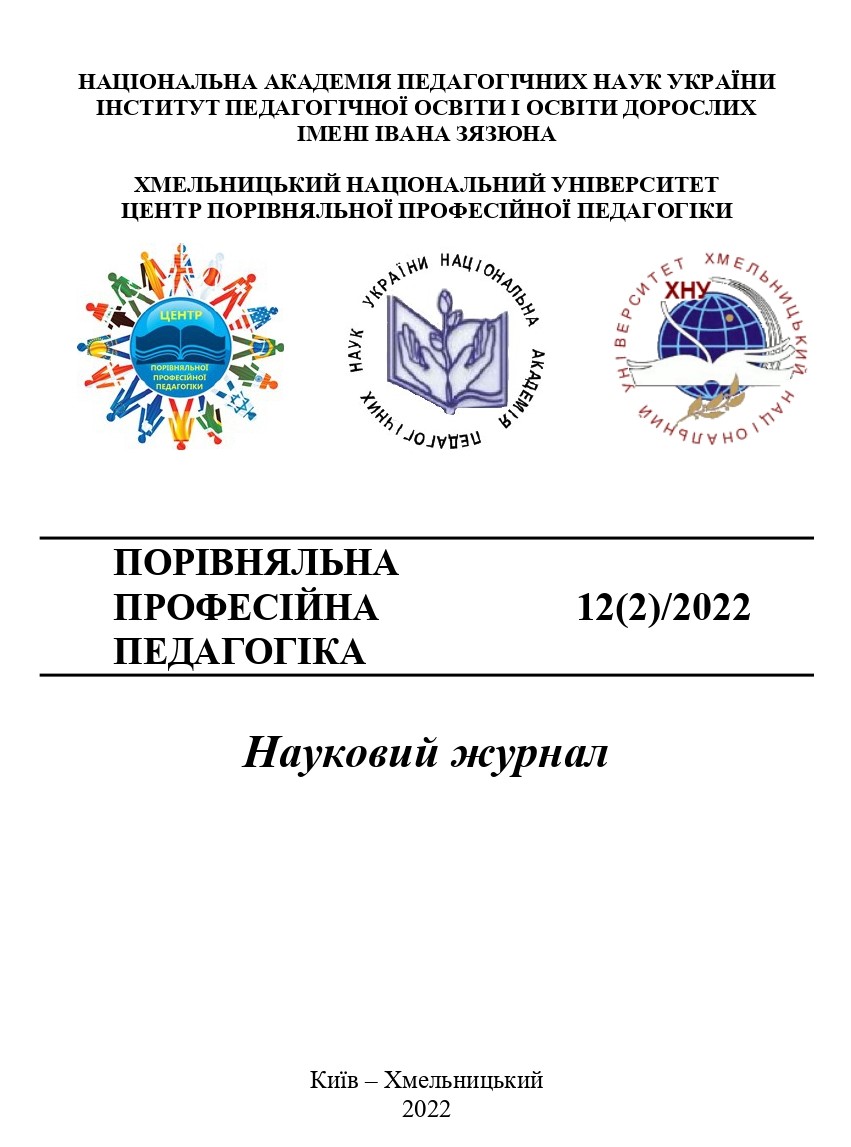DIDACTIC-DEMOCRATIC PARADIGM OF TEACHING CHOREOGRAPHY: THE UK EXPERIENCE
DOI:
https://doi.org/10.31891/2308-4081/2022-12(2)-7Keywords:
professional training, Great Britain, didactic-democratic spectrum, choreographic art, choreographer, training, methodologyAbstract
The article is devoted to the disclosure of the didactic features of the choreographers’ professional training in UK experience. It is found out that British teachers take into account new theories of the synthesis of music and dance art, dance and digital pedagogy, choreography, and sports. The "didactic-democratic spectrum" of training is characterized as a new paradigm of teaching choreographic art, which is based on the socio-artistic relations between the choreographer and the performer (new roles of the choreographer and the performer: "expert - performer", "director – translator", "facilitator – creator", "co-author – co-performer", "artist – narrator", etc.) It is substantiated that the didactic component covers teaching choreography on the principle of "teaching by showing", and democratic component covers a learning process based on cooperation, and partner interaction ("collaborative dance learning"). It is established that the "didactic" concept refers not only to the educational element "learning through demonstration", but also to the development of learning skills; the "democratic" concept is reflected in the social character dance, shades of democratic equality in dance on the basis of partnership and tolerance. The mechanism of step-by-step implementation and the content of the didactic-democratic spectrum of teaching choreography are presented. The model promotes the strengthening of the relationship between theoretical and practical learning based on facilitation, independent expertise in choreography learning, democratic teaching style, taking into account personal experience of the student and teacher, reflection and self-regulation, principles of social interaction, a balanced approach to teaching choreography. It is established that the development of choreographic skills in various styles of dance in British didactics is guided by the theory of constructivism, which is interpreted into the pedagogical theory of "dance notation pedagogy", which, in combination with Bloom's taxonomy, helps to outline motives, desires, interests in professional activity in general and in relation to the chosen dance style. It is concluded that the British system of choreographic education is based on the principles of "author's schools", choreographic amateurism, freedom of choice, freedom of creativity and improvisation, social and dance leadership.
References
Brodie, J. A., & Lobel, E. E. (2008). More than just a mirror image: the visual system and other modes of learning and performing dance. Journal of Dance Education, 8 (1), 23–31.
Bunker, J., Pakes, A., & Rowell, B. (Eds.). (2013). Thinking through dance: the philosophy of dance performance and practices. Hampshire: Dance Books Ltd.
Butterworth, J. (2004). Teaching choreography in higher education: a process continuum model. Research in Dance Education, 5 (1), 45–67.
Butterworth, J., & Wildschut, L. (2018). Contemporary choreography: a critical reader. London: Taylor and Francis.
Heiland, T. (2018). Taxonomies of learning outcomes using dance notation: cognitive, knowledge dimension, affective, conative, and psychomotor. Dance: Current Selected Research, 9 (August). Retrieved from https://journals.udel.edu/dance/article/ view/19.
Millar, B. (2019). Choreography: a focus on facilitation Dr Joanne Butterworth and Lucy Nicholson. UCLanDANCE, Media Factory. Retrieved from: https://www.labanguild.org.uk/wp-content/uploads/2020/06/ChoreographyFocusFacilita-tion.pdf.
Nicholson, L. (2008). Return to the body: an approach to working with those in disconnect. Retrieved from: http://dancercitizen.org/issue-8/lucy-nicholson/.
Smith-Autard, J. (2003). The essential relationship between pedagogy and technology in enhancing the teaching of dance form. Research in Dance Education, 4, 151–169.
Teaching Dance in an Online World Workshop with Amy Robertson. (2020). Retrieved from: https://www.dancebase.co.uk/professional/how-to-teach-dance-in-an-online-world-a-guide-1711.
The Holistic Dance Teacher. (2020). Collection of resources. Retrieved from: https://shannondoolingdances.com/resources/.
Warburton, E. C. (2004). Knowing what it takes: the effect of perceived learner advantages on dance teachers’ use of critical-thinking activities. Research in Dance Education, 5 (1), 69–82.


